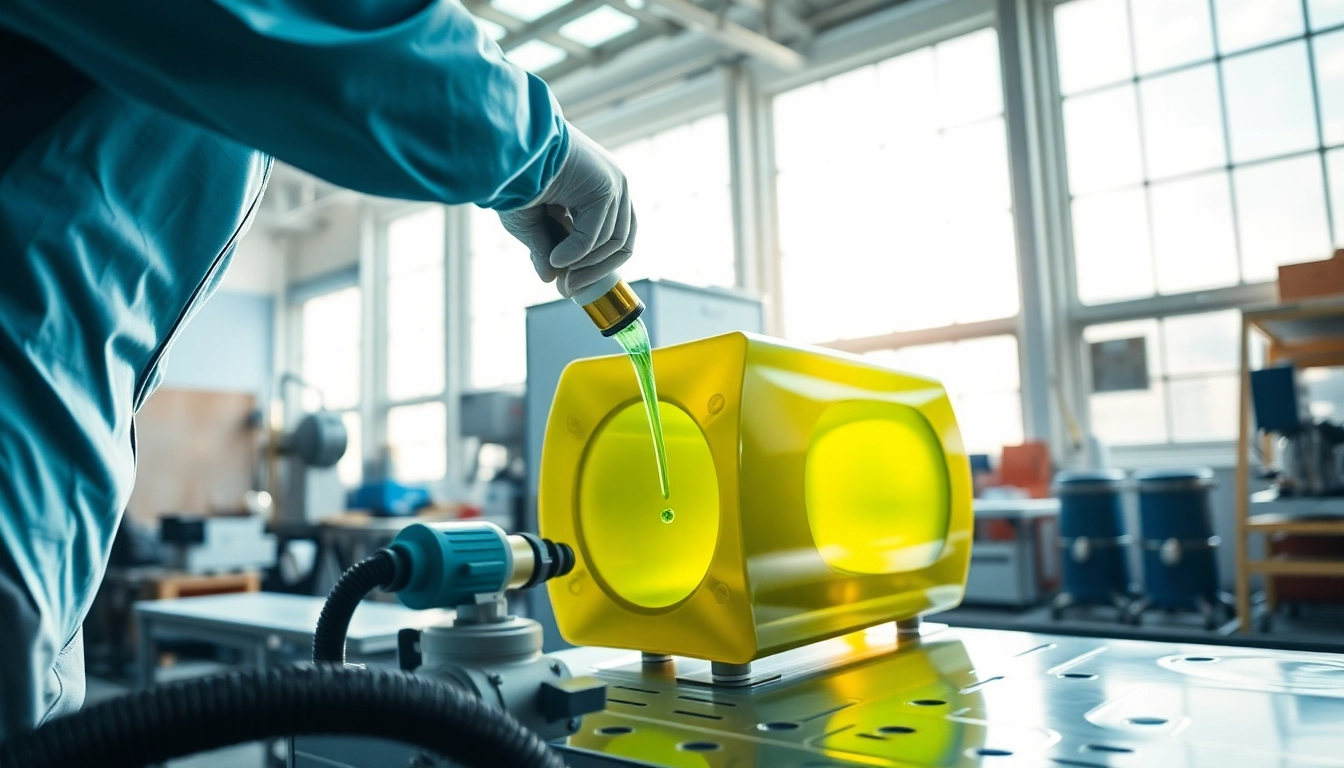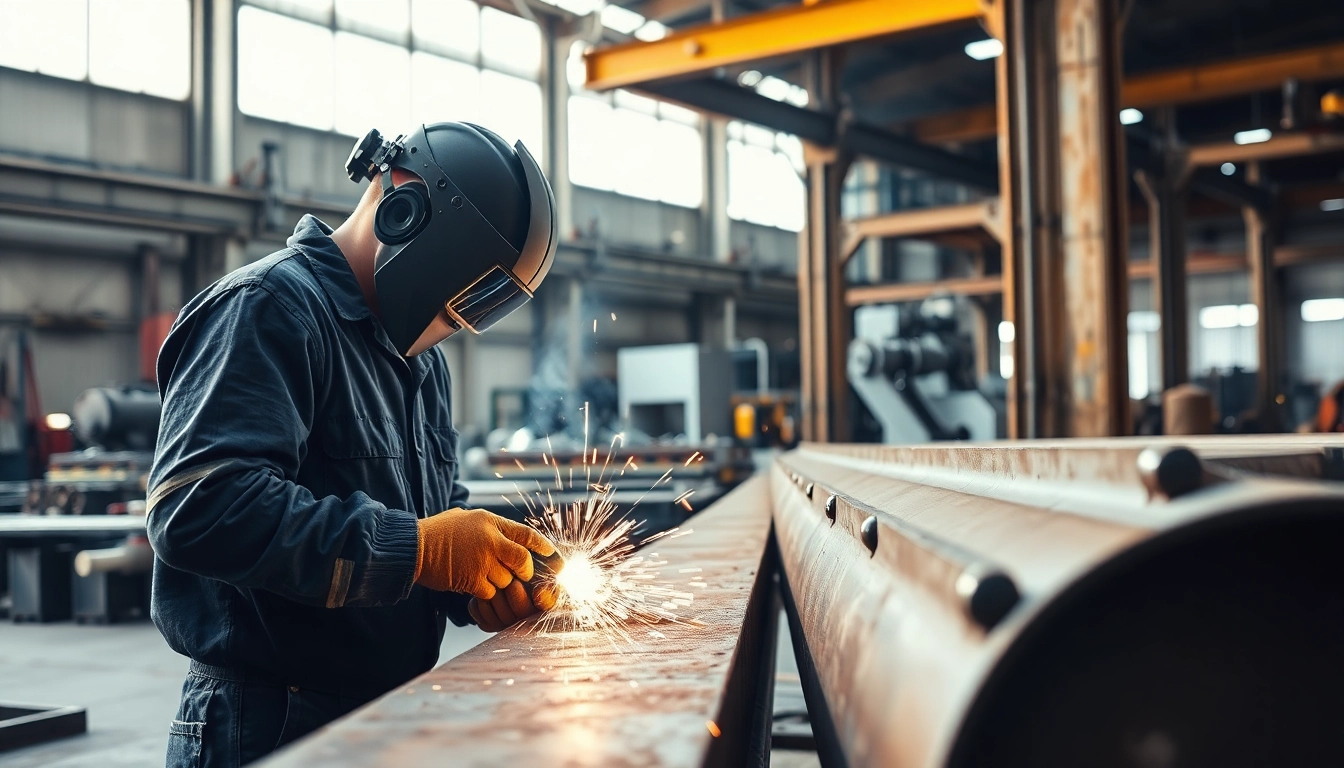Introduction to Infusion Resins
Infusion resins play a pivotal role in advanced composite manufacturing, offering a blend of strength, clarity, and controlled flow that is indispensable in various industrial applications. These specialized materials allow for the efficient construction of complex structures, leveraging techniques such as vacuum infusion to achieve superb performance characteristics. Whether you are an engineer, a manufacturing professional, or a DIY enthusiast, understanding the nuances of infusion resins can significantly enhance the quality of your projects. This guide is designed to delve into the various aspects of infusion resins, helping you navigate their use and application with confidence. For those looking to explore infusion resins further, the infusion resins available today provide numerous options tailored to different needs.
What are Infusion Resins?
Infusion resins are synthetic resins specifically formulated for the resin infusion process, which is a method used to produce composite materials. This process involves creating a vacuum to remove air from a mold containing reinforcing materials (like fiberglass or carbon fiber), after which the resin is introduced into the mold to bond with the fibers. This method ensures a high-fidelity fill and optimal fiber wetting, resulting in superior mechanical properties. Infusion resins typically have low viscosity, allowing for better fluidity and precision when permeating complex laminate structures. This characteristic is critical for achieving uniform distribution and minimizing voids, ultimately leading to a stronger and more durable final product.
Key Benefits of Using Infusion Resins
- Enhanced Strength and Durability: Infusion resins cure to form robust bonds with fibers, resulting in high-strength composites suitable for demanding applications.
- Superior Surface Finish: The infusion process leads to better aesthetics due to the resin’s ability to fill gaps and reduce air entrapment.
- Low Viscosity: The low viscosity of these resins allows them to easily flow into intricate mold geometries, ensuring complete saturation of the reinforcing layers.
- Controlled Curing Time: Infusion resins can be formulated to offer varying pot life, allowing users to control working times based on project needs.
- Environmentally Friendly Options: Many modern infusion resins are formulated to be more sustainable, utilizing bio-based materials that reduce environmental impact.
Common Applications for Infusion Resins
Infusion resins find applications across a wide range of industries. Here are some common uses:
- Aerospace: Infusion resins are extensively utilized in the manufacture of lightweight components such as wing structures, fuselage panels, and engine housings.
- Marine: The boat-building industry employs infusion resins for hulls and decks, benefiting from high strength-to-weight ratios.
- Automotive: Infusion technology is increasingly adopted for producing parts like bumpers, door panels, and structural components.
- Wind Energy: Wind turbine blades are commonly made using infusion resins, providing the necessary strength and durability to withstand environmental stresses.
- Sports Equipment: Items like bicycles, golf clubs, and other performance gear leverage the mechanical properties of infusion resins to enhance performance.
Types of Infusion Resins
Different types of infusion resins exist, each with unique properties suited to specific applications. Understanding these can help in selecting the right resin for your project.
Epoxy Infusion Resins
Epoxy infusion resins are the most commonly used type in composite applications due to their excellent adhesion properties and mechanical strength. These resins cure through a chemical reaction between two components: the resin itself and the hardener. They provide superior durability, heat resistance, and impact resistance, making them ideal for high-performance applications such as aerospace and marine environments. Additionally, epoxy resins can be engineered to create varying pot life properties, allowing for flexibility in manufacturing processes.
Polyester Infusion Resins
Polyester infusion resins are often used because they are cost-effective and easy to work with. They are generally preferred for applications where the mechanical properties are less critical, such as in boat hulls or automotive parts. While they do not perform as well as epoxy resins regarding durability and temperature resistance, they can be mixed with various fillers and additives to enhance certain properties. Polyester resins cure via a free radical mechanism, which typically results in faster setup times compared to epoxy resins.
Vinyl Ester Infusion Resins
Vinyl ester infusion resins offer a middle-ground option between epoxy and polyester resins. They provide higher chemical resistance than polyester while being less expensive than epoxy. This type of resin is well-suited for applications requiring moderate impact resistance and thermal stability, making them a popular choice in the marine and chemical industries. Vinyl esters are known for their excellent adhesion to composite materials and can be formulated with low-viscosity characteristics to facilitate effective infusion.
Choosing the Right Infusion Resins for Your Project
Selecting the appropriate infusion resin is crucial for achieving optimal performance in your composite manufacturing. Here are some essential factors to consider when making your choice.
Factors to Consider
- Application Requirements: Assess the mechanical and thermal requirements of your project. Consider whether you need high impact resistance, flexibility, or chemical resistance.
- Cost Considerations: Compare the costs of different resin types, keeping in mind that the price should reflect the required performance characteristics.
- Desired Cure Time: Determine your project timeline and choose a resin that aligns with the necessary curing duration.
- Environmental Conditions: Evaluate the environmental conditions that the final product will face, such as humidity or temperature extremes, which may influence your material choice.
Performance Metrics of Infusion Resins
Understanding the performance metrics of infusion resins can help ensure that you select a material best suited for your needs. Important metrics include:
- Tensile Strength: Indicates the resin’s resistance to being pulled apart. Higher tensile strength suggests better performance under stress.
- Flexural Strength: Measures the ability of the resin to withstand bending forces. This is crucial for applications where components experience flexural loads.
- Impact Resistance: It defines a material’s capacity to absorb energy during sudden forces. This is essential in sectors like aerospace, where safety is paramount.
- Thermal Stability: Evaluates the resin’s ability to maintain its properties over a range of temperatures, which is particularly important for automotive and aerospace applications.
Compatibility with Other Materials
When choosing infusion resins, consider their compatibility with the reinforcing fibers or other materials used in the composite structure. For example, epoxy resins bond well with carbon fiber, while polyester resins are often used with glass fibers. It is crucial to ensure that the chosen resin works well with the selected reinforcement to achieve optimal performance characteristics.
Best Practices for Using Infusion Resins
The successful application of infusion resins hinges on adhering to best practices throughout the entire process. Here are the steps to ensure a quality application.
Preparation Steps
- Mold Preparation: Ensure molds are clean, dry, and coated with a release agent to facilitate easy demolding.
- Material Selection: Choose the appropriate reinforcing materials based on the project requirements and confirm compatibility with the infusion resin.
- Ventilation Strategy: Plan the ventilation layout to guarantee proper airflow, allowing the resin to evenly saturate the fibers.
- Humidity Control: Monitor and control the humidity in the workspace to prevent moisture contamination, which can adversely affect the resin’s curing process.
Application Techniques
Application techniques highly influence the outcome of the infusion process:
- Vacuum Setup: Establish a reliable vacuum system to eliminate air from the mold before introducing the resin. A comprehensive vacuum setup is critical in preventing voids in the final composite.
- Resin Mixing: Follow the manufacturer’s guidelines for mixing the resin and hardener, ensuring accurate ratios for optimal curing performance.
- Monitoring Flow: Carefully watch the resin flow during the infusion process to prevent premature curing and blockages. Adjust venting as necessary to maintain uniform flow.
Post-Application Care and Maintenance
After applying the infusion resin, proper care and maintenance are vital in ensuring the longevity and performance of the composite structure:
- Curing Time: Allow the resin to cure fully as per the manufacturer’s guidelines. This ensures that the chemical reaction reaches its maximum potential.
- Inspection: Conduct thorough inspections for defects such as bubbles or delamination upon demolding. Address any issues immediately to avoid compromising the integrity of the part.
- Storage: Store unused resin and hardener components in a cool, dry place, ensuring they are sealed tightly to prevent moisture contamination.
Advanced Techniques in Resin Infusion
As technology continues to evolve, so does the methodology surrounding resin infusion. Innovators are employing advanced techniques to enhance the infusion process further, ensuring high-performance outcomes.
Innovative Methods for Better Flow
To improve infiltration in complex geometries, several innovative methods are gaining traction:
- Multi-Path Infusion: This technique divides the resin flow into multiple paths, allowing for better saturation of intricate fiber layouts.
- Sequential Infusion: Sequentially infusing different sections of a mold can help achieve better control over resin distribution without choking the infusion pathways.
- Pressure-Assist Techniques: Utilizing auxiliary pressure systems can aid in pushing the resin into tighter spots, ensuring complete saturation and minimizing air pockets.
Troubleshooting Common Problems
Even with the best practices, issues may still arise during infusion. Some common problems include:
- Poor Wetting: This may be addressed by adjusting the resin viscosity or ensuring proper mold preparation.
- Voids in the Composite: Ensuring proper vacuum levels and flow techniques can significantly decrease the occurrence of voids.
- Curing Issues: Inadequate heat or humidity control can impede curing; hence, monitoring environmental conditions is crucial.
Future Trends in Infusion Resins Technology
The future of infusion resins is promising, with trends pointing towards greater sustainability, efficiency, and performance:
- Bio-Based Resins: The push for eco-friendliness is leading to the development of bio-based infusion resins that reduce reliance on petroleum-based products.
- Smart Resins: Integrating sensors within composite structures to monitor health and performance is on the rise, enabling predictive maintenance and improving safety.
- Automation: Automated infusion processes are being researched to increase efficiency, reduce labor costs, and improve consistency in manufacturing.



